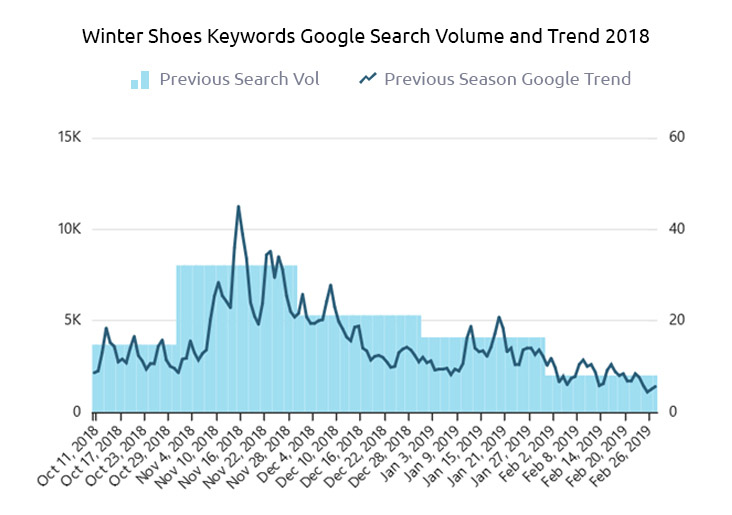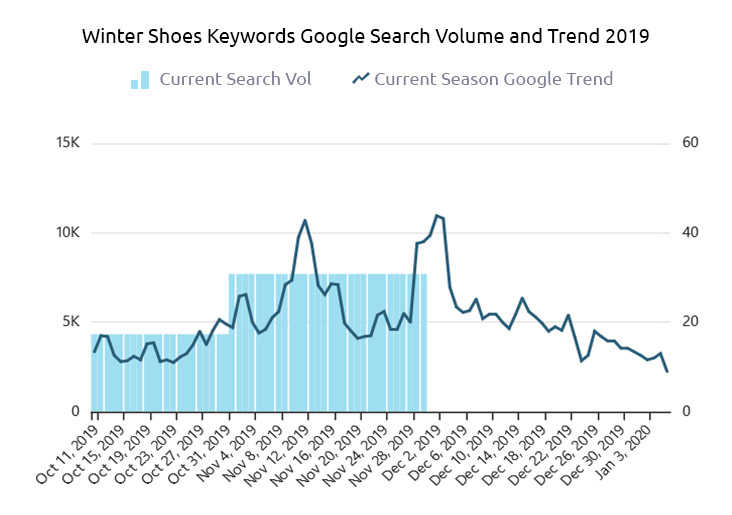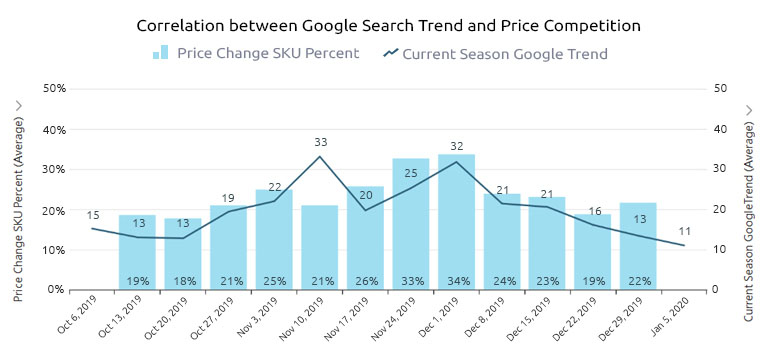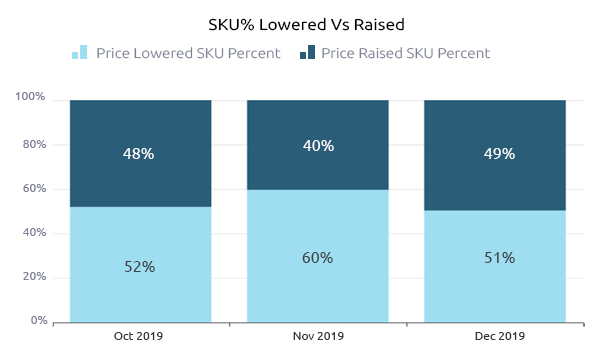Recent Google Trends analysis shows that people search for winter shoes more during the fall and early winter than they do at any other time of year. Merchants also reprice more often during the same period. GrowByData Product intelligence solution reveals an interesting correlation between winter shoes price competition analysis and online demand trend.
Online Search Data from 2018’s “winter shoes” keyword search shows that the online demand for winter shoes slowly picked up beginning in October and reached its peak during the holiday season. The demand decelerated in January and February.
People search for winter shoes more during the fall and early winter.


In 2019, Google showed a similar trend with online demand slowing to its lowest in January and February and peaking in November and December. The positive correlation between the average Google search trend and the number of reprices by retailers shows increasing demand and the seller’s desire to win market share when demand is highest (around November). The frequency of reprices also slows down as the online demand slows down.

To win market share, merchants are leveraging their price adjustments in favor of the consumer. Our retail pricing data collection of 140,000 SKUs of winter shoes shows that sellers lower the price of winter shoes as the demand rises. With that being said, we also noticed a substantial number of times when prices were raised. The primary reason for this is clearly that the sellers want to win market share by adjusting their pricing strategy for shoes and find opportunities to maximize revenue.




